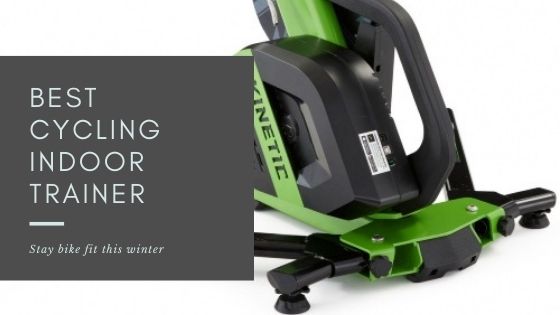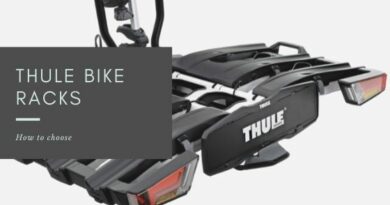Best Cycling Indoor Trainer: Stay bike fit this winter
Best Cycling Indoor Trainer
As the nights are drawing in and the weather is getting colder, you may not be too motivated to get your bike out. However, you will want to make sure your fitness is up to scratch when you finally get out on your bike. This is where a cycling indoor trainer comes in very useful. In this post I will highlight the different types, so you can decide which is the best cycling indoor trainer for you.
What Is A Cycling Indoor Trainer And Why Use One?
A cycling indoor trainer is also known as a turbo trainer. It allows you to ride your bike, stationary indoors. This means that they are the go-to piece of training equipment for when time is against you, the weather is horrible or just to warm up before a race.
Sitting on your bike, pedalling in your spare room may seem a bit boring. However, turbo trainers are fantastic for targeted fitness for all kinds of cycling. Winter is regarded as turbo trainer season, as ice, rain, wind and snow can make riding outdoors very unpleasant or impossible. Therefore, using a turbo trainer is a safer and more comfortable way to exercise.
Additionally, those people who are recovering from an injury that need gentle exercise will benefit from a turbo trainer. They can take it easy and stop whenever they need to. This means they are not stranded far away from home if they have overdone it.
Focused Training
One of the main advantages of using a turbo trainer is that you can focus your training. This means you can work towards goals and easily monitor your progress. Additionally, you can keep it interesting by going online, which lets you train and compete with others. Turbo trainers are also great for those who are short of time. A 30-minute blast every other day will make a big difference to your fitness, without taking up too much of your time.
Turbo Trainers for Mountain bikes
You can use most turbo trainers with a mountain bike. But, if you are using anything other than a direct drive type turbo trainer, get a slick back tyre. This will mean that your regular tyre won’t wear out and you will have a much quieter ride, as mountain bike tyres are knobbly.
Types of Cycling Indoor Trainer
Magnetic Resistance Type
This is probably the most common type of turbo trainer. They work by using a magnet to control the amount of resistance on the flywheel of the turbo trainer. Most types allow you to can change the resistance manually, by turning a dial on the handlebars, just like a spinning bike.
This easy adjustment of effort is great for interval training. It is also great for an easy ride, as you can just turn the dial down. As a rule of thumb, the more you spend on a magnetic resistance type turbo trainer, you get a bigger magnet. Bigger magnets give you more resistance.
If you live in a flat or plan on using a turbo trainer at unsociable hours, a magnetic turbo trainer is a good option. They are reasonably quiet and should upset too many people. They also fold flat, so are easy to store under your bed or in a cupboard.
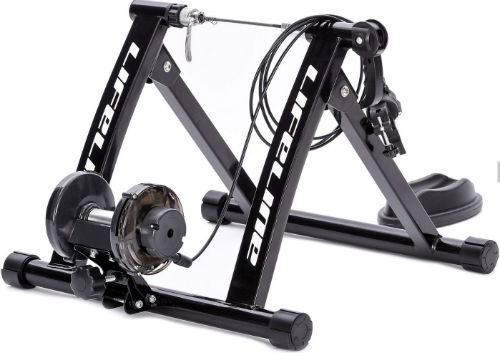
A good Magnetic resistance turbo trainer is the LifeLine TT-01 Turbo Trainer.
The LifeLine TT-01 is a decent budget turbo trainer. It is ideal for warm ups or light use at home. It has a very standard design and is well made. It is very easy to fit your bike to it, as you just need to tighten the mounts against your rear quick release. Included with the TT-01 is a steel quick release, so you don’t have to clamp the nice one that came with your bike (most of these don’t fit anyway).
Once your bike is in place, just tighten the roller against the wheel (it’ll cope with 26in to 700C wheels). You place the front wheel on the supplied riser, to clamp the the seven-position magnetic resistance lever onto your handlebar somewhere and you are ready to go.
This is a very stable turbo trainer and it works really well. However, if you live in an apartment or have some housemates, you may want to choose a different turbo trainer. This is because it is pretty loud and may upset the people around you if you are the type to go for hours.
Direct Drive
The direct-drive type of turbo trainer is relatively new. This trainer works by bolting your bike to it with your quick-release axle. This means you don’t use your back wheel and will give you more resistance than a magnetic turbo trainer. It will also cope better with hard pedalling and sprint sections.
The main disadvantage of a direct drive turbo trainer is that it is heavier and bulkier than the other types. This isn’t a problem if you don’t move it around too much; however, if you are planning to take it to race days to warm up, it may not be the best option.

My choice for a direct drive trainer is the Kinetic R1. This trainer gives you a natural feel while riding it. It gives you this feeling with a side to side movement, which is a feature you don’t get from other trainers.
The Kinetic R1 has some subtle, but useful details. For example, the large grab handle makes it easy to move around and get out of the box. This is a good thing, as it weighs 21.5kg. Another way the R1 makes life easy is the fact that you don’t need to build it. All you need to do is pull out its stabilising legs.
Unfortunately, The Kinetic R1 doesn’t come with a cassette. But the freehub works with both Shimano and SRAM. It only takes a few minutes to set up this turbo trainer, including updating the firmware. Everything connects via ANT+, ANT+ FE-C and Bluetooth FTMS for Mac and PC platforms. This includes smartphones, tablets and computers.
If you are used to regular turbo trainers, the sideways movement will be a new sensation for you and will feel odd. But once you settle into a smooth pedalling rhythm, you will get used to it, and it will feel more like riding outside.
You will either love or hate the sideways movement. But, most people that give it a chance start to like it after a few spins.
The R1 can handle 2,000 watts of resistance, which plenty for most people. The controlled resistance simulates changes in terrain very well and works with gradients of up to 20 degrees.
When you are out of the saddle and sprinting, it is an odd sensation to start with. But once you start to go with the movement, it starts to feel natural. You can adjust how much sideways action you want, so you can get it right for your weight and how you would like it to feel.
You will find the R1 louder than most of its competitors, but it is relatively quiet and is never really going to upset anyone in the next room.
The R1 is an excellent direct-drive indoor trainer, even if it’s not the quietest. The sideways movement may divide people, but once you get used to it, you get a fun a realistic ride feel.
Fluid Resistance
Fluid resistance turbo trainers offer the smoothest feel through the pedals. This method is also the quietest, therefore best for not annoying your neighbours. They don’t allow you to change the resistance from your handlebars though. The resistance is changed by the progressive effort you put into the pedals. Therefore, the harder you pedal, the harder the resistance. The idea behind this is so you can just concentrate on pedalling and not have to worry about tweaking a dial.
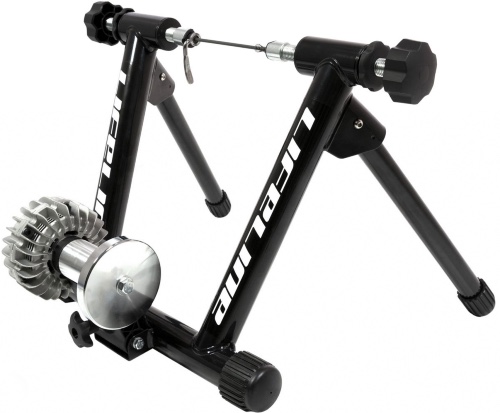
An excellent option for a fluid resistance cycling indoor trainer is the LifeLine TT-02 Fluid Turbo Trainer. This turbo trainer is a great introduction to indoor training. It is smooth and quiet enough not to upset those around you, and very easy to set up. The fact that it folds flat means it is easy to store away. One of the most significant advantages of this is the price, making it a good buy for your first turbo trainer.
The Lifeline TT-02 Fluid Turbo Trainer, is also very versatile, as It can take 26″, 27.5″ and 29″ wheels.
Smart Trainers
This type of turbo trainer can be connected wirelessly to your phone or tablet via Bluetooth. This allows you to use a wide variety of unique training experiences. You can download free and paid apps to your phone, that tells the trainer when to make it difficult or easier for the training programme you are doing.
The ability of a smart turbo trainer to connect with these apps makes this the most sophisticated and effective type of turbo trainer available.
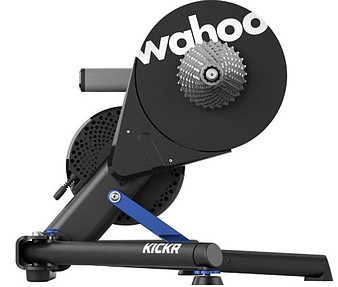
This turbo trainer offers the most realistic indoor training experience available. It works via a large flywheel, and is virtually silent. When you link it to your phone or tablet, you can simulate pretty much any ride you want, using virtual routes. These routes are synchronized in real time to your workout. It even simulates the on-screen terrain.
Analysis of your ride comes from the RPM Cadence Sensor. It also monitors your speed, distance and power to allow you to keep tabs on your progress.
Tips For Making A Cycling Indoor Trainer More Interesting
An indoor cycling trainer can get pretty dull; therefore, motivation may become an issue. But, there are a few things you can do to make a turbo trainer more interesting.
1. Put it in a good place
You will find it difficult to jump on a turbo trainer if it is in a place that isn’t very nice. Therefore, you need to prepare the location you plan on putting it. You need to consider your location, as you don’t want to annoy your neighbours and you don’t want to drip sweat all over your carpet. You want your turbo trainer’s home to be inviting, so you get on it at least twice per week during winter.
Garages, basements, attics and spare rooms are ideal. If noise is an issue, you can buy noise-damping mats, that will help. You can also buy a fan, that will help to reduce your sweatiness, you may want a hand towel to mop yourself too. High-end turbo trainers come with a special crossbar protector, to protect the finish of your bike from the sweat.
Setting your bike and turbo trainer up correctly will also make it easy to jump on and get on with it.
2. Entertain Yourself
Music, films, TV, podcasts are all things that can block out the monotony of static riding. Films and box sets are good for long, low-intensity workouts. When it comes to high-intensity ones, create a motivational playlist of songs that will get you going. I like to use 80s rock with a bit of the Rocky soundtrack thrown in. You can even use the time to discover new music through Spotify.
Alternatively, you can follow training videos. A good one to check out is thesufferfest.com.
3. Set yourself Challenges
Get a heart rate monitor, as it will give you an idea of your personal limits. With this, you can link up to apps that will provide you with workouts to complete. Doing this will make it easy to monitor your improvements.
4. Strava it
You can now do virtual Strava segments on your turbo trainer. The Wahoo KICKRPower Trainer is a direct drive turbo trainer that allows you to simulate 2 million Strava segments from home.
5. Feel the Difference
After doing a bit of indoor work, you will notice the difference in your fitness. This feeling will give you some motivation for your next indoor session.
Which Turbo Trainer will you buy?
There are a few considerations, but once you have made your decision, it will change your fitness for the better. Getting into the best shape of your life to improve your mountain biking is not exactly a bad thing.
Let me know your thoughts and questions in the comments section below. Also, don’t forget to sign up for the MTB-Threads newsletter!

